How to grow a butterfly friendly garden
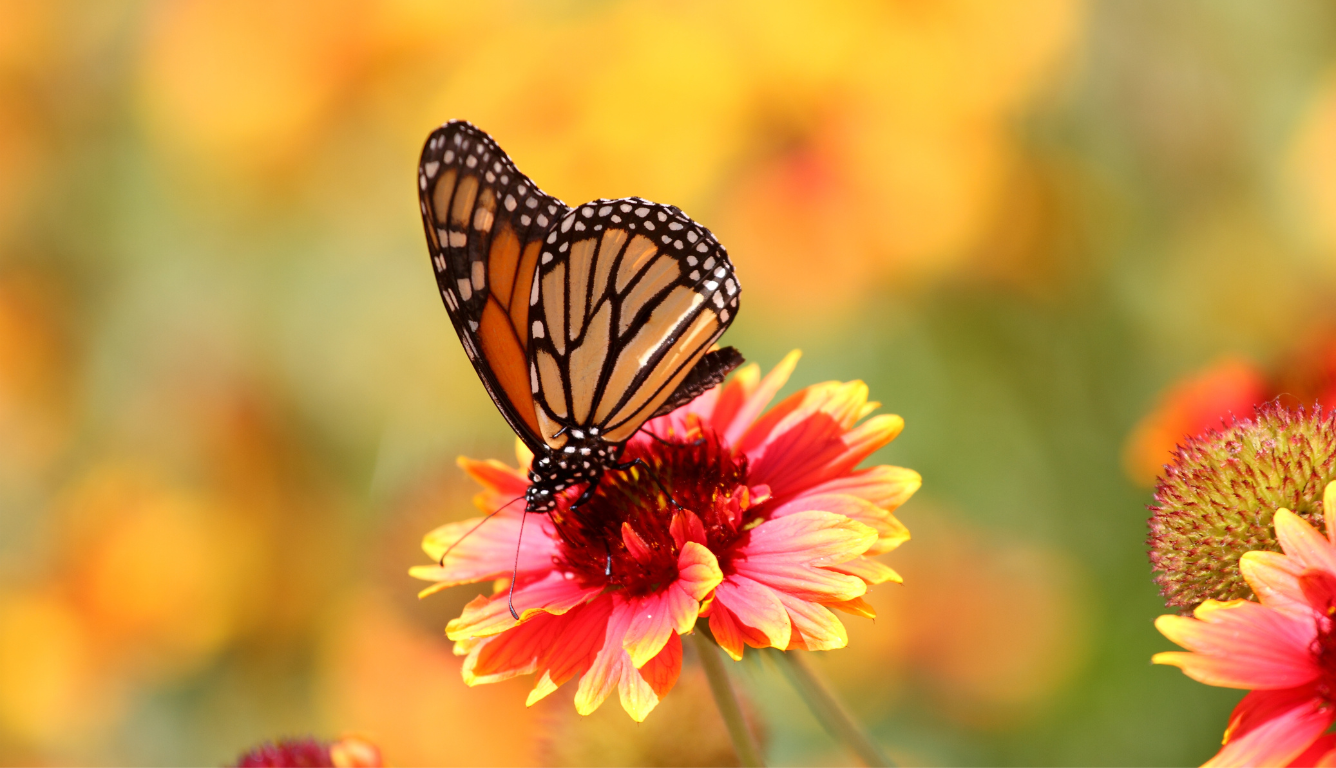
There’s nothing quite as magical as seeing the beautiful colours of a butterfly’s wings as it flutters around the blossoms. If their visits to your garden are rarer than you might like, then perhaps it’s time to consider planning your green space more around them.
In this article, we’ll let you know how to create a butterfly friendly garden, the flowers you can plant to encourage their visits, some extra tips and tricks to boost their enthusiasm for your outdoor area, and we’ll also tell you about some of the butterflies to look out for this season.
Where to start
As with any new project, it’s important to do your research. You need to find out what types of butterflies live in your area so that you’ll know how to attract them. The kind of nectar and flowers you plant can differ depending on which butterflies are native to your area. You could either do a bit of online research or even better, take a couple of walks in your local area to look out for which ones you can spot.
When you’ve thought of the flowers you want to plant, it’s important to plan the area. Whilst having your plants in a big group will help the winged insects find them easily, you also want to ensure you can enjoy seeing their visits. Find a balance by having small groups of butterfly friendly plants in different areas, including near a patio or living room window so that you can watch them from your favourite chair.
You might be focussed on the beautiful butterflies, but don’t forget the caterpillars. When laying their eggs, butterflies will find an area that is rich in nutrients for when they hatch. The most helpful plants for caterpillars are veggies and herbs, like carrots, chives, dill and parsley – among others. You may be concerned about your edible plants being demolished, but don’t worry, unlike some of their more enthusiastic relatives, most butterfly caterpillars rarely cause death or halted growth when feeding on a healthy plant.
After deciding which plants to grow, make sure you put them in plenty of sunlight. Not only will this help the sunshine-loving, nectar-producing flowers to bloom and grow, it’s also very attractive to butterflies. They require warmth to fly and you will generally only see them when it’s sunny. Keep your plants somewhere with at least 6 hours of sunshine each day, but in a nice spot that’s sheltered from the wind where possible.
Popular plants for butterflies
Now that you’ve planned out what the garden will look like, where everything will go, and which butterflies you might expect, it’s time to decide on your plants. To encourage your winged friends, you’ll want to find flowers and bushes that are nectar and pollen-rich. Butterflies use sense receptors on their legs and antennae to smell the flowers and ascertain whether the nectar is good.
Did you know though, that it’s not just their sense of smell that they use? They’re also attracted by colours. The type that each species will like will differ, but it’s best to plant a variety so that they have options and plenty of diversity to enjoy.
Traditionally there are certain flowers and shrubs you can plant that will always be popular. Perhaps most famous for attracting butterflies are the gorgeously scented, buddleja. These shrubs produce blossoms for several weeks during the summer and autumn months. You could consider planting a few different varieties which would extend the season they’ll flower.
Other blooms popular with butterflies tend to be shallow blossomed, brightly coloured plants because these allow the nectar to be easily accessed. Gardening blog, Fantastic Gardeners, explain that, “The crucial aspect of a butterfly-friendly garden is to provide different flowers that attract butterflies – both nectar-producing flowers such as butterfly weed, purple coneflowers, and asters – and host plants for their caterpillars like violets, nettle, or willow.”
As you consider what you want to grow, the wonderful thing about planning your space around butterflies is that you know that the plants you choose will be a rainbow of colours, have a gorgeous smell, as well as a variety of shapes and sizes.
What else encourages butterflies?
It’s not just what you grow that can invite butterflies into your outside space. There are other steps you can take to make your garden even more enticing to them.
Butterfly food:
Though they love nectar, there are other sweet-smelling things that butterflies will be eager to try. Overripe fruit is particularly enjoyable for them as the fermenting process brings out the natural sugars. If you have any fruit trees in your garden, you could leave any fallen apples, pears or plums on the ground for them to enjoy. Alternatively, place a dish of overripe fruit outside – perhaps near a window next to your sofa to keep a watch out for your favourite butterflies.
Flat stones:
You could be so focussed on filling your garden with beautiful blooms, you may have forgotten about a place for butterflies to rest. They like to spread their wings in the sun when they take time to rejuvenate. This helps to bring up their body temperature and energy so they can continue to fly around your colourful, sweet-smelling garden.
Shelter:
Butterflies like to shelter in a number of different places. The more natural occurring spaces could be a hollow trunk or other safe areas, but if you are a dab hand at DIY, you could make your very own butterfly house. The Woodland Trust has written a step by step guide on how to make a home for the beautiful insects. You can read it here.
Butterflies to look out for
Perhaps the most famous and recognisable butterflies are the red admiral and small tortoiseshell, but there are nearly 60 species in the UK, with 22 of them found in the many gardens. Keep an eye out for the following:
Common blue
Easily recognised by its violet-blue upper wings and grey-beige undersides, this beautiful variant can be found between May and September – and have even stayed as long as October in the warmer years.
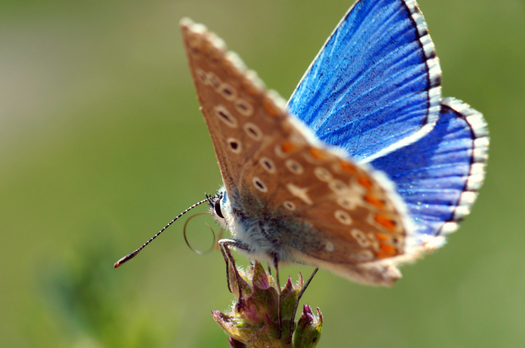
Painted lady
Very similar in colouring to the commonly seen small tortoiseshell, the painted lady variant has pale orange wings with black tips and white spots. They migrate to and from Northern Africa and tend to arrive in late spring and early summer.
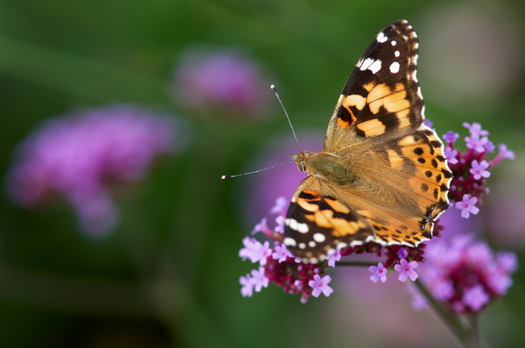
Large white
Sometimes referred to as the ‘cabbage butterfly’, this well-known species is considered a pest by some gardeners due to the caterpillar’s eating habits! They’re still a lovely one to keep an eye out for though if you’re not too precious about your vegetable patch!
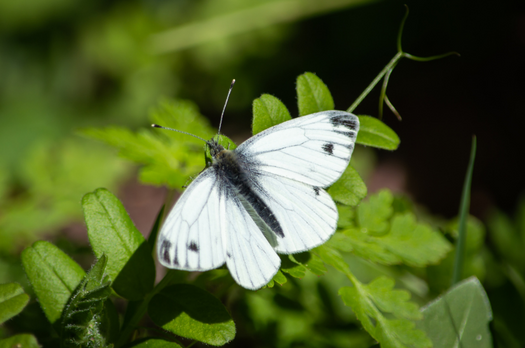
Speckled wood
Perhaps not as visually enticing as some of its relatives, these have brown wings and creamy-yellow spots. They’re a commonly seen butterfly – usually in the south of England and Wales but are beginning to be spotted in the Eastern and Northern parts of the country. They tend to favour woodlands, so it’ll be an extra endorsement if you have one visit your garden!
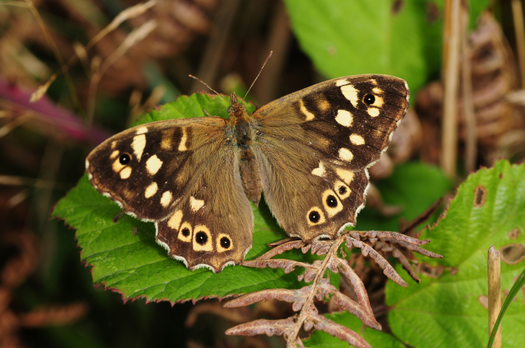
If you’d like to learn more about other butterflies you can see in UK gardens and natural areas, the RSPB have a useful illustrated guide for what to look for; you can it find here.
As you will have no doubt heard on the news and nature programmes, our British insects and wildlife are under real threat. With the loss of habitats, increased pollution and global warming causing erratic weather, they need all the help we can offer. By following the steps outlined above, you can support them in your own gardens and green spaces by creating an insect paradise right outside your back door.
Sign up for our newsletter
Sign up for our newsletter to hear about our exciting new collections, interior trends, wellbeing advice as well as exclusive offers.



